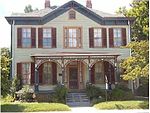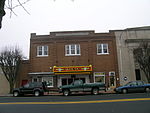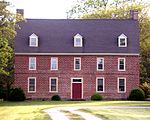Pocomoke City Historic District

The Pocomoke City Historic District is a national historic district in Pocomoke City, Worcester County, Maryland. The historic district includes the central business district (CBD) and surrounding residential area of Pocomoke City. The CBD is defined by an important collection of late-19th century and early-20th century commercial and public architecture. It includes a significant array of Victorian, Colonial Revival, and Beaux-Arts influenced structures. The majority of the housing dates from 1870 to 1940. It is an example of a type of prosperous river town that characterized the region during the period, which retains an exceptional collection of 19th and 20th century building forms.It was added to the National Register of Historic Places in 2004.
Excerpt from the Wikipedia article Pocomoke City Historic District (License: CC BY-SA 3.0, Authors, Images).Pocomoke City Historic District
Market Street,
Geographical coordinates (GPS) Address Nearby Places Show on map
Geographical coordinates (GPS)
| Latitude | Longitude |
|---|---|
| N 38.073333333333 ° | E -75.565833333333 ° |
Address
First Baptist Church of Pocomoke City
Market Street 202
21851
Maryland, United States
Open on Google Maps








